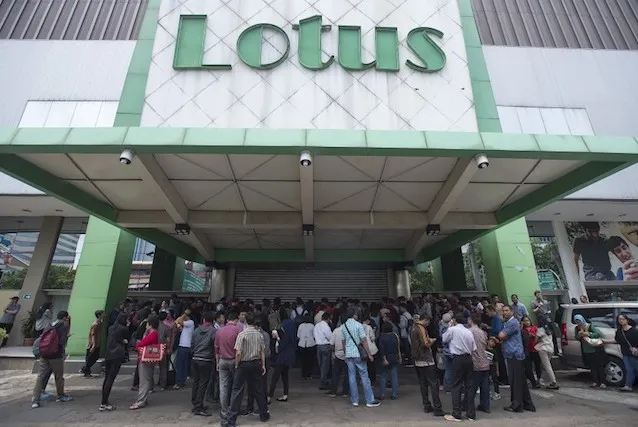
Online is crushing offline in 2017 (?)


Is going online really the secret to stealing the hearts of Indonesian consumer?
The end of 2017 is here. December, the last month of the year. Colder wind than Jakarta’s usual and increasing rain frequency signaling the biggest green-ish coffee chain in the world to start selling their winter drinks like hot choco and other tongue-burning beverages, tumblers, and so on. Our eyes would be familiar with discount tags cause it can be seen in every malls as a sign for “year end sale”. And of course, it is the time to prepare next year’s annual budget.
Regarding the latter, it is important to look ahead on what the marketing trends are going to be in 2018 as a guideline. But before we’re going further, let’s step back to this year’s trends.
2017 is a tough year for some retailers, from fashion retailers such Lotus and Debenhams to convenience stores such as 7-Eleven. The latter even lost roughly IDR 447.9 billion on their first quarter of 2017 before finally closing up shop. Much to burn, eh? Many blame the decrease of Indonesians’ purchasing power, but the reality speaks differently.

Courtesy of Republika.co.id

Courtesy of CNN Indonesia
The Indonesian Minister of Finance Sri Mulyani noted an increase of purchasing power during her opening seminar for Modern Retail Expo 2017 at JI Expo Kemayoran last November 28, 2017. According to Mulyani’s findings, Indonesia’s economy grew by 5.06% on the third quarter of 2017 from the previous year.

Courtesy of Kompas.id
The reason behind Debenhams and Lotus closing their doors forever was a massive behavior change in the global community on how they manage their spending. People like to buy things from online rather than going out of their homes. They pay for their electricity, insurance and SIM card data plan online. Zakat can be paid online. They can even pay someone else to queue for movie tickets. Online business model is definitely rising, but is it really causing all those shutdowns? You might want to think again.
As you can see below, the online economy’s contribution toward Indonesia’s total Gross Domestic Product (GDP) is only 7.3%. The population of e-commerce users in Indonesia is at an underwhelming 9%. Saleswise, e-commerce only generates 2% of the total retail sales in Indonesia.

Even so, the growth of digital economy sector still needs to be anticipated as The President of Republic of Indonesia, Joko Widodo has a vision to put Indonesia as South East Asia’s e-commerce central by 2020.
That vision wasn't based on nothing. According to the research company We Are Social, Indonesia has 132.7 million internet users in early 2017. A significant growth considering in the early 2016 we only had 88.1 million. From 2016-2017, about 24.74 million people spent $5.6 billion (IDR 74,6 trillion) at various e-commerce shops. In order to support those growth, a fiber optic installation project called Palapa Ring is being carried out all across the western, middle and eastern parts of Indonesia and will be finished by September 2018. Base Transceiver Stations (BTS) are also being developed around border areas with 77 stations already built across 47 districts.

Courtesy of We Are Social.com
The question is, why those big names above still have to close their doors forever? We bet they have poured much money into their marketing budget to make sure everything is fine. To answer that question, we couldn’t more agree with the Republic of Indonesia’s President, Joko Widodo. As Jokowi stated in National Coordination Meeting 2017 held by Indonesian Chamber of Commerce and Industry that’s because the retailers cannot follow what’s trending now. It was too late for them to shift their business model. They don’t really know or even care what people wants. We also think the same.

Courtesy of detikFinance
In our opinion, the offline stores who decided to end their journeys are the ones who doesn’t have a strong concept. They spent much on their marketing budget only to show that they are the cheapest on the market. Once they wanted to change the way they do the marketing, it was already too late.
Those who survive until now are the ones who spent marketing budget correctly. They think about customer’s experience, their psychology and their personality. They keep innovating to meet those aspects by adding recreation and amusement parks, culinary sections, and places to just hangout. A place they can share on their social media. That’s what people are looking for in retailers nowadays: not only to purchase, but to experience.
Back to Sri Mulyani’s presentation, it showed that in 2020 urban youths will make up 58% of Indonesian population. They have distinct characteristics that will affect their taste, preference and consumption behavior. Retailers have to start adjusting their marketing spending accordingly.

Now, we have come to a conclusion that online is definitely a rising marketing channel in 2017. On the other hand, offline businesses also have to pay attention to what Gen-Y and millennial consumer wants if they want to survive. But it’s just the tip of the iceberg. What we’re going to talk on the next article will be more focused on what to do when you decide to go online in 2018.
For better understanding, we prepared you an infographic to give you the highlights of our article above.
/ UP NEXT




